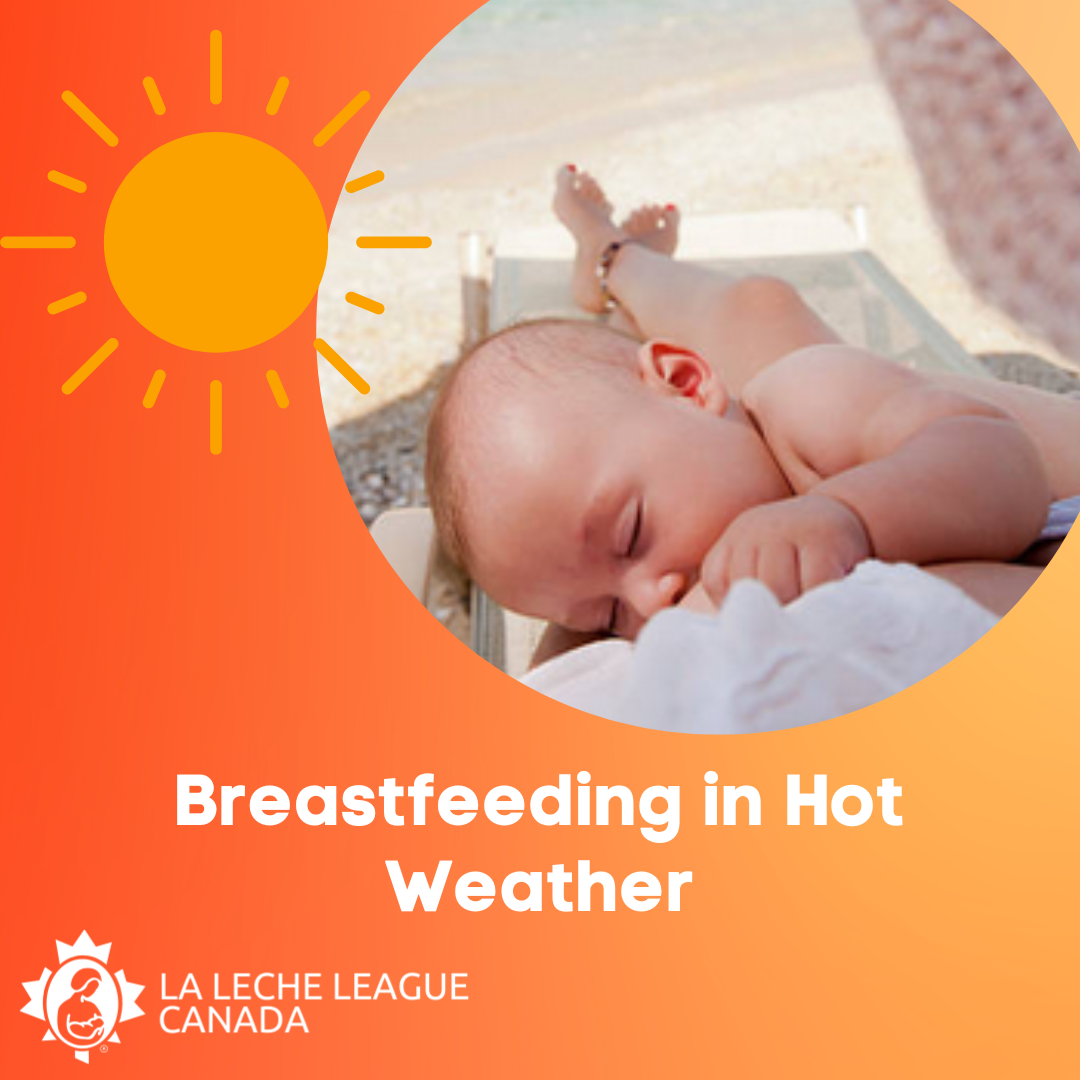
Your milk is all your baby needs in the first six months, as long as breastfeeding is well-established, even on very hot, humid days. Amazingly, your milk will adjust to ensure that your baby gets all the fluids needed to stay hydrated. Water does not have any calories or nutrition. Any water you give your baby takes the place of breastmilk in her tummy. This means that she will drink less of your milk at the next feeding. Your milk quenches your baby’s thirst and provides valuable nutrition and calories at the same time. You may find that your baby might nurse a little more frequently in hot weather. Remember that the more milk your baby drinks, the more milk your body makes. Nursing your baby frequently, and not giving your baby any other liquids, including water and juice, will maintain your milk supply.
Breastfeeding a warm baby on a hot day can leave both of you feeling hot and sweaty. A flannel receiving blanket or a dish towel draped over your arm between your skin and baby’s can help both of you feel more comfortable. You may want to consider nursing in a bathtub or children’s pool. In hot weather, you’ll find that you need more water than usual. Don't forget to pack extra water if you plan to go out on a warm day.
When your baby begins to eat solid foods, then you can introduce small amounts of water. On hot days your baby might also enjoy healthy popsicles made of diluted juice, crushed fruit, yogurt or even pureed green vegetables like spinach. You can even add your expressed milk, if you have any. Teething babies and toddlers may find these comforting at any time of the year.
Please consider supporting LLLC.
Updated July 2024
